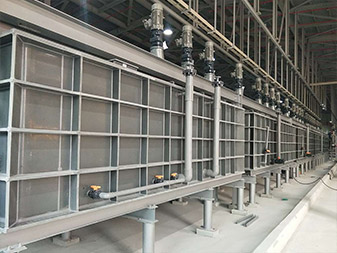The particle size of ore plays a critical role in the nickel leaching process, significantly influencing the efficiency and rate of metal extraction. In general, smaller particle sizes provide a greater surface area for the leaching solution to interact with the ore. This increased surface area is vital because it allows for enhanced contact between the leaching agents and the nickel-bearing minerals, facilitating more effective dissolution of nickel ions into the solution.
Impact of Particle Size on Nickel Leaching
Surface Area Exposure: Smaller particle sizes exponentially increase the surface area available for leaching agents. This means that more nickel-bearing surfaces are accessible, allowing for a more rapid reaction with the leaching solution.
Diffusion Limitations: In larger particles, the leaching solution may struggle to penetrate the ore matrix, creating diffusion limitations. This can lead to incomplete leaching and reduced nickel recovery, as the solution cannot effectively reach the nickel ions locked within the ore.
Leaching Kinetics: The rate of nickel dissolution is closely related to particle size. Smaller particles often exhibit first-order kinetics, where the rate of reaction depends on the concentration of the reactants, while larger particles may show slower, zero-order kinetics, leading to prolonged leaching times.

Crushing and Grinding Costs: While finer grinding improves leaching efficiency, it also incurs higher energy and operational costs. Striking a balance between optimal particle size and economic feasibility is crucial for efficient processing.
Ore Type Considerations: Different nickel ores (e.g., sulfide vs. lateritic) may respond differently to size variations. Lateritic ores, for example, may require finer grinding to achieve effective leaching due to their complex mineralogy.
Chemical Environment: The leaching environment (e.g., pH, temperature, and the presence of specific reagents) can also interact with particle size effects. For instance, optimal pH levels may further enhance the dissolution rates of nickel from finer particles.
Aggregate and Liberation Effects: The way particles aggregate during crushing can influence the overall effectiveness of leaching. Proper liberation of nickel-bearing minerals from gangue is essential; if minerals are not adequately liberated, even small particle sizes may not yield good recovery.
In conclusion, while smaller particle sizes generally enhance nickel leaching rates due to increased surface area and reduced diffusion barriers, the interplay of ore characteristics, leaching environment, and economic considerations complicates the optimization process. A comprehensive approach that considers all these factors is essential for improving the efficiency and sustainability of nickel extraction processes.